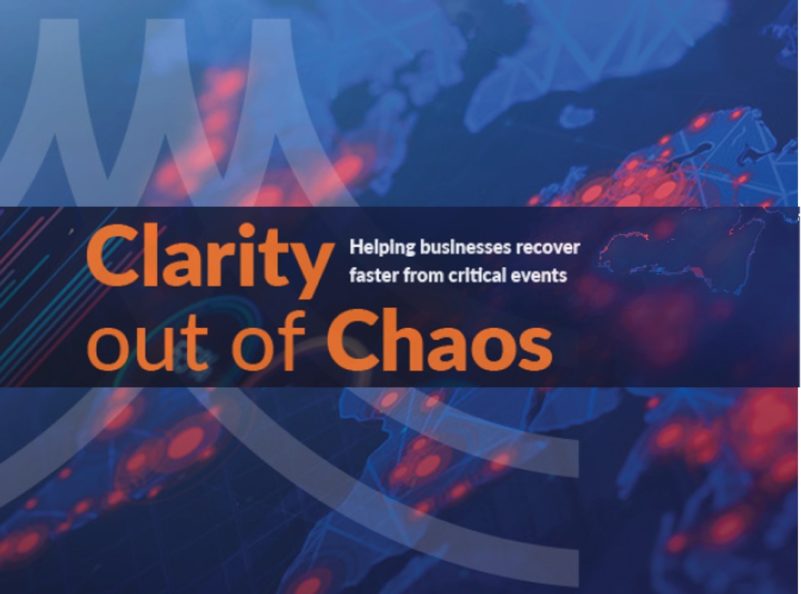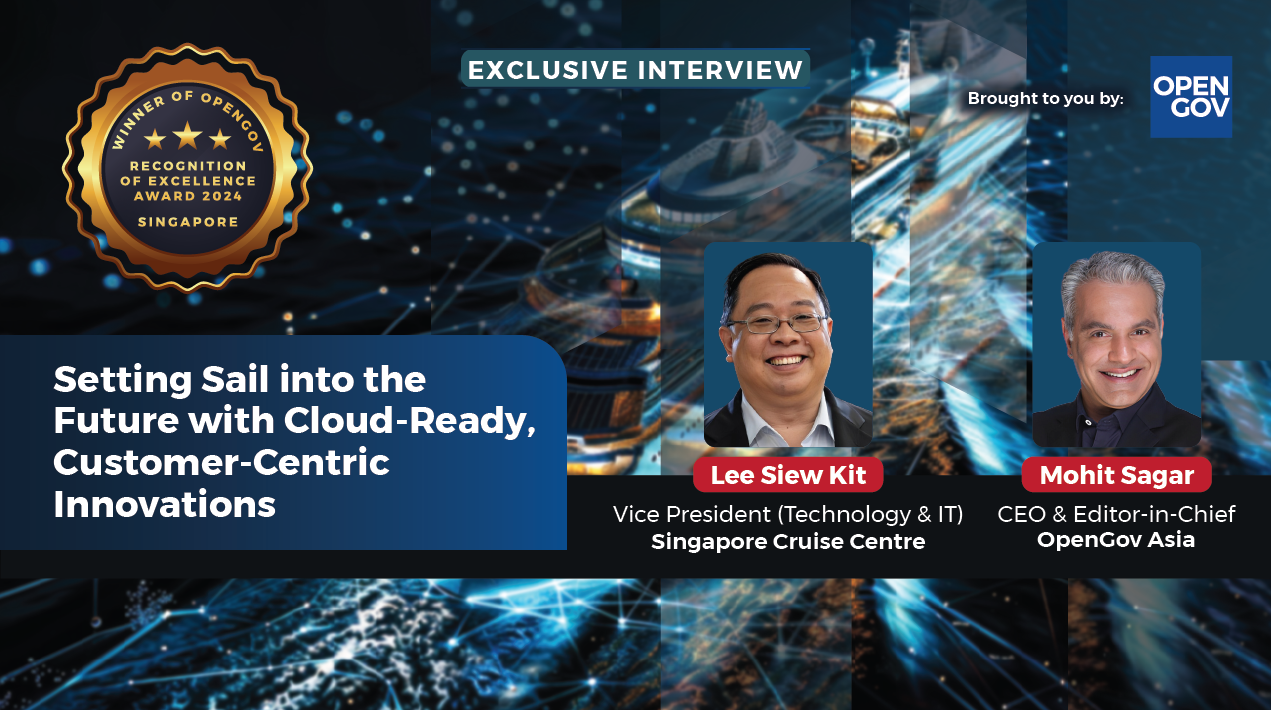
Critical events are becoming more common for businesses to manage. From significant weather events, natural disasters and global pandemics, they create operational disruptions and have an enormous financial impact.

OpenGov had the opportunity to speak with Graeme Orsborn, VP – International CEM Business Unit, Everbridge, whose company mission is to keep people safe and help organisations avoid, reduce the impact of, and recover from disruption to operations when a critical event occurs.
The discussion revolved around the value of Critical Event Management for any organisation as well as the basics steps to take in order to put in place a successful critical event management plan and how that applies in the global COVID-19 crisis today.
Everbridge, Inc. is a global software company that provides enterprise software applications that automate and accelerate organisations’ operational response to critical events.
A report recently published by Everbridge explained how global health crises, such as the COVID-19 pandemic, crippled several industries from manufacturing to travel with the expected impact in the trillions.
Comparatively, the 2003 SARS outbreak had a 10-year impact on the Hong Kong and China economy and decreased the real GDP growth of all major economies. Coronavirus is expected to have a wider effect yet to be fully realised!
In light of these crises, the need to create a proactive and efficient Critical Event Management programme has become a top priority for all organisations regardless of size.
“Critical event management is the evolution of how to now manage critical events in a much more structured way for organisations. Historically organisations worked in a siloed approach – the business continuity team, instant response team, life safety team, HR functions, supply chain functions – all managing critical events but they weren’t doing it in a holistic fashion.”
Senior Management Looking at Critical Event Management as a Priority
Graeme explained that due to the increased occurrence of critical events in day-to-day business as well as those across the world, like COVID-19, along with rapid changes such as digitalisation, has made senior leaders look at Critical Event Management as a priority.
Management is changing and management is now being forced to change. This is now a board-level discussion. When looking at things like cyber-attacks that happen, or even currently, the change in the world where people are having to cope with new ways of working – these are bringing critical event management to the forefront.
There has been a huge evolution which has happened over the last 19 years; and there has been a huge change regarding culture. Bricks and mortar organisations, in comparison to online ones, have to adapt themselves because things have changed so quickly.
Prescriptiveness and Predictability
Graeme highlighted two keywords when talking about Critical Event Management – prescriptiveness and predictability.
“When we look at critical events, the key for every single organisation is how predictable can we be in regard to our response and how prescriptive can we make that.”
Graeme gave the example of a Chief Executive from a Finance Institute in New York who always believed that there was a potential adverse event that could happen to their location. Therefore, every single month they practised evacuating the building. He took the potential threat so seriously that the management went out and got everybody a pair of pumps which sat underneath their desk.
The key behind good critical event management is, actually, familiarity – which requires organisational change.
Quick Assessment & Action
This really the simple value proposition of critical about management is bad things happen to good things that people care about – that constitutes a critical event.
And organisations need to take action.
When we bring those two together, it’s really about understanding very quickly what the impact is – the assessment phase
After the initial assessment phase, organisations move into the action phase.
When organisations do an assessment, they have to determine whether it comes from a reliable source. What is the disruption? Where is it?
“It is amazing when we look at how long this takes organisations just to be able to assess the current incident that they are being alerted to.”
If the assessment cannot be done in a timely fashion, then it is no longer incident management – it transitions to recovery.
The recovery phase is how an organisation can identify or communicate to the correct people at the correct time during that incident.
Everbridge is seeing transformation because of how people are doing this; because of the companies that are doing it and the people that are being spoken to are seeing the value.
Identifying Pain Points Fundamental to Critical Event Management
For organisations who are starting to develop their critical event management plan, the Everbridge team shared that taking note of the businesses core pain points are the starting blocks to building a critical event management plan.
“Every single organisation is suffering from some type of incident every single day, and what we are focused on is Where is the most pain? We really try to identify where that pain point is coming from and how to best benefit business.”
It is imperative to have senior management buy-in because it is essentially the senior leadership team that has to drive the initiative. At the starting point, it is a value-add proposition for the organisation which is a senior management decision.
The Everbridge teams have to pick a painful experience that an organisation has experienced and one that the organisation is able to identify that they have faced some challenges.
The beginning phase is helping the organisation understand how Everbridge consolidates all of the alerts to their biggest challenges – this is referred to as alert velocity.
Everbridge has done a lot of different exercises for a number of different organisations where a simple thing such as the fire drill poses a huge issue because people actually don’t know who’s in the building at that time.
From an Everbridge perspective, in the fire drill scenario, they do that (determine who’s in the building) through connecting things such as the visitor management system and access control systems.
Using information from these systems allows them to have a unified data set immediately. This makes it so simple that when the organisation’s management team sees the data set, they get an overview immediately. And then they know the change(s) that need to be done.
These types of value-adds are what really drive the speed of response and also a culture change – because people understand the value of what Everbridge is doing.
COVID-19 highlights the need for Critical Event Management
When looking at the evolution of COVID-19 across the world, it seems that the world has learnt a huge amount. Going through the crisis has actually opened eyes in a much more stringent way.
This is giving people a huge amount of focus in regards to what they prepared to do – what they understand needs to be done to be able to respond to the next event.
Graeme used the example to show how Taiwan has coped with COVID-19 after being traumatised by the SARS experience.
On the very first day Taiwan got the news from Wuhan, they applied everything that they learned from SARS. At the time the count of cases in Taiwan was less than 400, and the number of casualties less than 10.
Taiwan has never gone under lockdown, and are informing their population on a very regular basis without any alerting fatigue.
From their experience with SARS, they have defined a set of best practices, which is independent of the World Health Organization.
Taipei is the capital in the world that is the most prone to earthquakes, typhoons and potential invasion by China. So there is the super preparedness, not only from the government but also from the mindset of the people.
They have started wearing some masks from day one without it being imposed, knowing that this is to protect others and not to protect themselves.
The government had taken measures but not total measures to disrupt the flights from mainland China immediately and especially from Wuhan.
It is possible to convince people to adopt best practices and hopefully with software that supports these best practices at the government level and at a company level.
Graeme also told of another learning to come from the current global crisis, which is the danger of misinformation, lack of strategy and communication.
The biggest education is in the absence of a transparent strategy there is an information vacuum. People will make their own decisions or will seek out information themselves from the easiest sources – which tend to be online social media.
They will come to their own conclusions about what they should do next and that is a more frightening danger than a government coming up with an incorrect strategy.
At least if it’s a strategy, you have everyone pulling in the right direction or at least a single direction. If you have that lack of information and sort of feel that some of the countries in the world are sorted out on this teetering edge unless those strategies are made clear very, very quickly.”
This leads us to the second installment of our exclusive interview: How Communication is Key to the Success of a Critical Event Management Plan

















